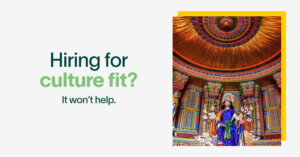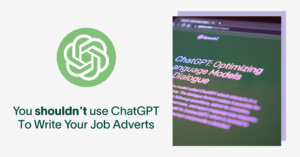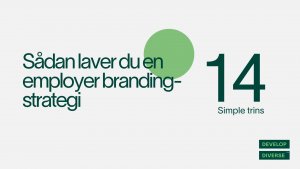Right from a very early age, we’re all surrounded by stereotypes. Whether it’s a nurturing mother figure, a cartoon character, or the famous ‘draw a scientist’ experiment, these generalised beliefs about the world around us shape our worldview on a conscious and unconscious level.
We’ve often accepted them as just being part of how our culture and society operate. But as a consequence, that makes us less aware of how they harm inclusion in the workplace.
In this post, Emil Novák-Tót, Head of Research here at Develop Diverse, explains how stereotypes work, how they impact your inclusion efforts, and how we identify them within the Develop Diverse platform.
What are stereotypes, and why do they exist?
“A stereotype is an idea that certain groups of people are more prone to behave in certain ways,” says Emil. “It’s what we’d call a ‘natural shortcut’ in our brain — historically we’re used to thinking about people in certain ways. Stereotypes exist everywhere — including gender, age, ethnicities, racialised identities, disabilities, and neurodiversity.
“But stereotypes can become very harmful because they can mean we cut people off from opportunities. Unless we challenge them, they will continue to exist.”
Stereotypes form based on our inferences of people belonging to certain groups, which means we form generalised perspectives of who they are, and how they’re likely to behave or act.
And while we might not feel that some stereotypes are inherently critical or bad — like saying someone belonging to a particular identity group is good at a specific skill — it doesn’t mean an individual from that group identifies with it, or finds the association positive.
“One stereotype that has gone unchallenged is stereotyping around people on the autistic spectrum,” Emil explains. “For example, in an employment scenario, employers might make an assumption that a person on the autism spectrum is better at finding bugs in code or spotting patterns. In reality, that makes a huge assumption about the skills that person has, and the work they like to do. To avoid situations like this we should actively work on building a proper neurodiverse inclusion strategy.
“Study after study shows us that individual variation within any given group is always larger in capabilities, skills, and competencies, than between groups,” Emil adds. “So when we operate on social stereotypes, that’s not an efficient or productive way to find the people who will do the job successfully or distribute tasks.”
Examples of stereotypes include:
- Gender: Men are more likely to be considered as ambitious, or natural leaders. Women are more likely to be associated with descriptors like helpful or compassionate.
- Race and ethnicity: In most Western countries, East Asian people are often stereotyped as being good at maths. Black women are stereotyped as being more aggressive and hostile in the workplace. Stereotypes based on race and ethnicity can change depending on the country.
- Neurodiversity: People with ADHD are often stereotyped as being hyperactive, loud, and impulsive. People with OCD are seen as being overly clean or tidy.
- LGBTQIA+: “In the workplace, LGBTQIA+ people are often stereotyped as more living salient lives, meaning they can be seen as ‘shoving their lifestyle in other people’s faces,” says Emil. “For instance, a male colleague mentioning his wife is unlikely to attract attention, but a male colleague mentioning his husband is often seen as him trying to draw attention to the fact he’s gay.”
- Age: Older employees may be stereotyped as less able to learn new processes or adapt. Younger employees may be seen as less emotionally mature or reliable.
- Disability: People with disabilities are often seen as helpless or less capable than their peers. They may also be stereotyped as being dependent on a wheelchair.
How stereotypes impact employment and recruitment outcomes
At first glance, some stereotypes may seem more overtly harmful than others — but all of them can contribute to exclusion. This is because stereotypes can and do have an impact on everything from who applies to a job, to who gets promoted, who gets paid more, and ultimately, who ends up leading your company.
- Research from 2014 found that candidates from ethnically marginalised groups often hold meta-stereotypes which can undermine their belief in their opportunity to get hired. When these are activated in the language you use in your job advert, it makes them less likely to apply to your job at all.
- According to a 2019 study, women are more likely to discount positive feedback about their skills and show weak self-confidence. Down the line, this has a direct impact on their likelihood of negotiating a job offer.
- Another 2019 study found that Black men are expected to negotiate less than White peers on salary. When they did negotiate, they were offered less as a result.
- A 2019 review of 25 studies found a significant relationship between negative age stereotypes and job satisfaction, performance, and learning of older employees.
Stereotypes can also interact with each other and create whole new stereotypes specific to those intersections. For example, a Black woman doesn’t just face anti-Black racism and misogyny, but also experiences a specific type of discrimination that relates to her being Black and a woman.
In short, Stereotypes harm individuals by lowering confidence, limiting opportunities, and creating a negative work environment. Companies suffer due to reduced productivity, hampered diversity, and potential legal issues. Ultimately, everyone loses.
When we highlight a word or phrase that communicates a stereotype in the Develop Diverse platform, we’re not saying that you meant to cause harm or that you can’t use a particular word. Instead, we’re highlighting that stereotypes are a product of our culture and society, and how they could potentially negatively impact others.
“This context is important, because we’re not trying to say that women are not ambitious, and that you shouldn’t say you’re looking for ambitious people,” Emil says. “What we’re actually saying is that historically, women have been discouraged from being ambitious. It’s the same for other stereotypical or biased words. Stereotypes are still actively used to keep people from different groups out of the workplace.”
How to identify stereotypes in the Develop Diverse platform and foster greater inclusion
Awareness of stereotypes is the first step to creating a more inclusive workplace. In the Develop Diverse platform, when we identify words and phrases that communicate stereotypes or bias, we highlight which groups are most likely to be impacted by it, and why. This helps you understand how your language choices may be perceived by folks from different identity groups.
“In the Develop Diverse platform we work a lot with meta-stereotypes, which refers to the beliefs a group of people think others think of them,” Emil explains. “This is really relevant for the responses that trigger in our brain when we see certain language used.
“For example, if we have a job advert that says ‘we’re looking for an ambitious candidate’, this may activate a meta-stereotype among candidates that are women. Women are often discouraged from showing agentic behaviours, such as ambition, at work and in society. When they do, they’re often labelled as aggressive or pushy. So when they see this word, it could activate a meta-stereotype that doesn’t represent them.
“As a first step, simply having awareness of stereotypical language in our everyday communication, like job adverts, can help us shift our habits,” Emil says. “Interacting with it every day means we can start to change that mental picture we have of who might be successful in the role.
“On a deeper level, identifying where stereotypes show up in your language can be used as a diagnostic tool of your culture. For example, you might see it pop up in job adverts for specific types of role, or within internal communications documents. Being able to observe these trends can help pinpoint the hidden biases in your language, meaning you can critically engage with that, and look for root causes.”
Develop Diverse can help you identify the hidden stereotypes in your own job adverts and internal communications. Book a demo to find out how!





